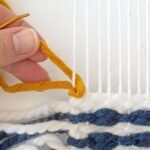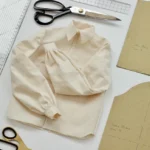When purchasing a rug, understanding how to identify quality is crucial for ensuring you get the best value for your money. A high-quality rug not only enhances your space but also lasts for years. Here’s a guide on what to look for when buying a rug:
1. Material Matters
The material of the rug significantly affects its quality and durability. Common rug materials include wool, silk, cotton, and synthetic fibers. Each material has its own set of benefits:
- Wool: Known for its durability and resilience, wool rugs are ideal for high-traffic areas. They are also resistant to stains and easy to clean.
- Silk: Silk rugs are luxurious and have a soft, lustrous appearance. They are best suited for low-traffic areas due to their delicate nature.
- Cotton: Cotton rugs are affordable and easy to clean. They are great for casual spaces but may wear out quicker than wool or silk.
- Synthetic Fibers: Rugs made from synthetic materials like nylon or polyester are often stain-resistant and budget-friendly. However, they may not offer the same durability as natural fibers.
2. Check the Weave and Construction
The construction of the rug affects its durability and appearance. Common construction types include hand-knotted, tufted, and woven. Here’s what to look for:
- Hand-Knotted: High-quality rugs are often hand-knotted, with each knot secured individually. This method ensures longevity and intricate designs.
- Tufted: Tufted rugs are made by punching yarn through a backing. Check for a strong backing and secure yarns to ensure durability.
- Woven: Woven rugs are crafted by interlacing fibers. Look for even patterns and consistent texture, which indicate a well-made rug.
3. Inspect the Pattern and Design
Quality rugs often feature intricate patterns and designs. When examining the rug, consider the following:
- Consistency: Ensure the pattern is consistent throughout the rug. Inconsistencies may indicate poor craftsmanship.
- Detail: High-quality rugs have fine details and clear designs. Check for sharp lines and well-defined motifs.
4. Feel the Texture
The texture of the rug is a good indicator of its quality. Run your hand over the rug and feel for:
- Softness: Quality rugs made from natural fibers, like wool or silk, should feel soft and luxurious underfoot. Synthetic fibers may feel less plush.
- Density: A dense rug with a high pile count is generally more durable and comfortable. Check if the fibers are tightly packed.
5. Examine the Backing
The backing of the rug provides insight into its construction quality. For a durable rug:
- Look for a Strong Backing: A well-made rug will have a sturdy backing that supports the fibers and prevents them from shedding.
- Check for Additional Layers: Some high-quality rugs have additional layers for added durability and comfort. Ensure these layers are securely attached.
6. Consider the Brand and Origin
Reputable brands and origins often signify quality. Research brands known for their craftsmanship and quality. Rugs from well-regarded regions, such as Persian or Turkish rugs, are often crafted with traditional techniques that ensure durability.

7. Look for Authenticity
Verify the authenticity of the rug to ensure you’re purchasing a genuine product. High-quality rugs often come with certification or labels indicating their origin and materials. Ask the seller for any available documentation.
Conclusion
Identifying a quality rug involves examining materials, construction, patterns, texture, backing, and authenticity. By paying attention to these factors, you can ensure that you select a rug that not only enhances your space but also provides lasting value. A well-chosen rug can transform a room and stand the test of time, making it a worthwhile investment.











